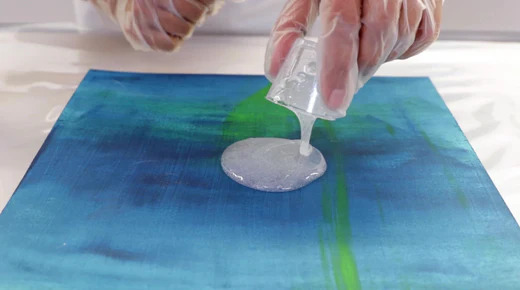- Your cart is empty
- Continue Shopping

Why Is My Resin Cloudy? Discover the Main 6 Causes
Understand what’s dulling your shine—and how to fix it.
You’ve poured your heart (and hardener) into a resin project… only to wake up to a cloudy, hazy finish instead of the glass-like clarity you expected. Sound familiar?
Don’t worry—cloudy resin is a common issue, and the good news is: it’s usually fixable (or preventable next time). In this post, we’ll walk through the 6 main reasons your resin may turn cloudy, along with easy tips to get that crystal-clear finish every time.
☁️ 1. Improper Mixing
What’s happening:
When resin and hardener aren’t mixed thoroughly or at the correct ratio, the chemical reaction doesn’t fully complete. The result? A cloudy, sticky, or soft surface.
How to fix it:
- Mix exactly as directed—usually a 1:1 or 2:1 ratio (check your brand instructions).
- Stir slowly but thoroughly for at least 3–5 minutes, scraping the sides and bottom of your container.
- Use clear mixing cups with measurement lines for accuracy.
❄️ 2. Cold Temperatures
What’s happening:
Resin reacts poorly in cold environments. If your room or materials are below the recommended temperature (usually 70–75°F / 21–24°C), the resin thickens and traps microbubbles, making the finish look milky or foggy.
How to fix it:
- Warm your resin bottles in a warm water bath (sealed and upright) before mixing.
- Ensure your workspace is warm and draft-free (use a space heater if needed).
- Avoid working in cold garages, basements, or near windows in winter.
💨 3. Excess Bubbles
What’s happening:
Too many air bubbles in your mix or pour can rise to the surface and get trapped, giving your resin a cloudy look—especially in deep molds or layers.
How to fix it:
- Stir slowly to minimize bubble creation.
- Pour in layers and let each layer sit for 1–2 minutes before popping bubbles.
- Use a heat gun or torch (briefly!) to pop surface bubbles right after pouring.
💧 4. Moisture Contamination
What’s happening:
Water + resin = trouble. Even a small amount of moisture from a mold, tool, or air humidity can cause clouding, bubbling, or even foaming.
How to fix it:
- Make sure your molds and tools are completely dry before starting.
- Avoid mixing resin on rainy or super humid days.
- Store your resin in a cool, dry place, sealed tightly.
🕓 5. Expired or Old Resin
What’s happening:
Over time, resin can degrade—especially if stored improperly or exposed to temperature swings. Old resin may turn yellow, separate, or create a cloudy finish when cured.
How to fix it:
- Check the expiration date and shelf life (usually 6–12 months after opening).
- Always store in a cool, dark place, away from direct sunlight.
- If resin has separated or smells “off,” it’s safer to toss it.
🧼 6. Residue in Molds or Cups
What’s happening:
Leftover cleaning agents, soap, dust, or oils can cause a chemical reaction or stop the resin from curing properly—leading to haziness.
How to fix it:
- Clean molds with isopropyl alcohol and let them fully dry before pouring.
- Avoid soapy water unless you rinse and dry meticulously.
- Always handle molds with clean hands or gloves.
✨ Bonus Tips for Crystal-Clear Resin:
- Use quality resin specifically made for art or casting—not industrial brands.
- Work in a dust-free area to avoid particles settling mid-cure.
- Use a UV-resistant resin for projects that will be in sunlight.
💬 Final Thoughts
A cloudy resin project can be disappointing, but it’s also a fantastic learning moment. With a few adjustments to your materials, workspace, and technique, you’ll be on your way to flawless, glass-like finishes in no time.

